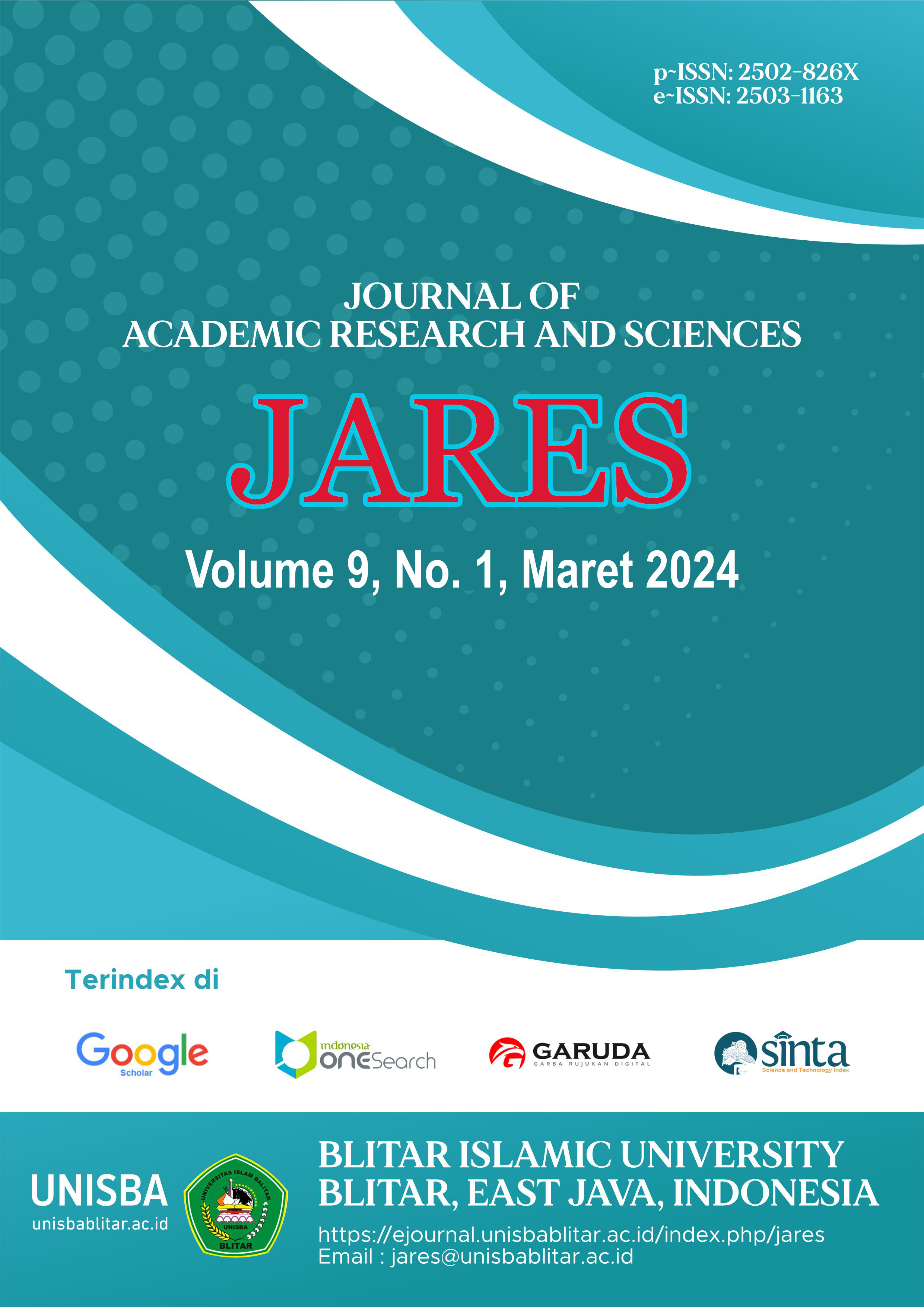IN SILICO STUDY : HERMETIA ILLUCENS BASED ACUTE RESPIRATORY INFECTION TREATMENT
DOI:
https://doi.org/10.35457/jares.v9i1.1363Keywords:
Acute respiratory infection, Hermetia illucens, in silico, Streptococcus pneumoniaeAbstract
The novel coronavirus is now referred to as severe and critical acute respiratory syndrome coronavirus-2 (SARS-CoV-2). There have been few studies about SARS-CoV-2 co-infection may significantly inhibit the immune system of host, increase antibacterial therapy intolerance, and be harmful to the prognosis of the disease. The highest co infection comes from Streptococcus pneumoniae. Bacterial co-infection in the setting of viral pneumonia is known as major cause of mortality. Therefore, therapeutics such as antibiotics are needed to be able to kill and inhibit these bacteria. In this connection, the inaccurate use of antibiotics causes multi-drug resistant and worsens their immature immune systems. Hermetia illucens contains AMPs and various amino acids that synergistically have the potential to overcome this problem. Research on the use of crude maggot extract as a candidate for acute respiratory infection treatment products is still not available and has never been reported. This study aims to conduct in silico computerized tests related to the potential of maggot extract as antibacterial and anti-inflammatory properties, analyze its interaction with target proteins, bioavailability and ligand toxicity in maggot extract, and docking analysis of ligand-receptor. The results showed that the maggot extract had activity as peptidoglycan glycosyltransferase inhibitor, antibacterial, and anti-inflammatory. A binding affinity of the maggot AMPs ligands (defensin, diptericin, and attacin) to MurC receptor protein Streptococcus pneumoniae is also found. The antibacterial and anti-inflammatory abilities of bioactive maggots have the potential for used as a candidate treatment products for SARS-CoV-2 co-infection with Streptococcus pneumoniae as a biomedical innovation.
Downloads
References
Zhu, X. Ge, Y. Wu, T. Zhao, K. Chen, Y. Wu, B. Cui, L. 2020. Co-infection with respiratory pathogens among COVID-2019 cases. Virus Research. 285: 198005
Yu, M. Li, Z. Chen, W. Rong, T. Wang, G. Wang, F. Ma, X. 2020. Evaluation of full-fat Hermetia illucens larvae meal as a fishmeal replacement for weanling piglets: effect on the growth performance, apparent nutrient digestibility, blood parameters, and gut morphology. Animal Feed Science and Technology. 40. 1-10.
Duployez, C. Guem, RL. Tinez, C. Lejeuna, AL. Robriquet, L. Six, S. Lorez, C. Wallet, F. 2020. Panton-Valentine leukocidin-secreting Staphylococus aureus pneumonia complicating COVID-19. Emerging Infectious Disease. 26 (8): 1939-1941.
Hapsari, MM. Keuter, HFM. Broek, VN. Hadi, U. Herawati, Y. Anggoro, DB. Sachro. 2016. Penurunan penggunaan antibiotik pada pasien anak penurunan penggunaan antibiotik pada pasien anak dengan demam. Jurnal Sari Pediatri. 8 (1): 16–24.
Uvel, H. Engström, Y. 2007. A multilayered defense against infection: combinatorial control of insect immune genes. Trends in Genetics. 23(7): 342–349.
Kusumaningtyas, E. 2018. Aplikasi peptida untuk meningkatkan kesehatan dan produktivitas ternak. Jurnal Wartazoa. 28 (2): 89-98.
Wardhana, AH. 2016. Black soldier fly (Hermetia illucens) sebagai sumber protein alternatif untuk pakan ternak. Jurnal Wartazoa. 26(2): 69-78.
Choi, WH, Jiang, M. 2014. Evaluation of antibacterial activity of hexanedioic acid isolated from Hermetia illucens larvae. Journal of Biomedicine. 12(3) :179- 189.
Filimonov, D.A., A.A. Lagunin, T.A. Gloriozova, A.V. Rudik, D.S. Druzhilovskii,
P.V. Pogodin, V.V. Poroikov. (2014). Prediction of the biological activity spectra of organic compounds using the PASS online web resource. Chemistry of Heterocyclic Compounds. 50(3): 444-457.
Moraes, GL. Gomes, GC. Sousa, PRM. Alves, CM. Thavendran. Kruger, HG. Maguire, GE. Lamichhane, G. Lameira, J. 2015. Structural and functional
Chambers, M.C., K.L. Lightfield, D.D. Schneider. (2012). How the fly balances its ability to combat different pathogens. PLoS Pathog. 8(12). e1002970
Darras, F.H., & Y.P. Pang. (2017). On the use of the experimentally determined enzyme inhibition constant as a measure of absolute binding affinity. Biochemical and Biophysical Research Communications. 489(4): 451-454.
Benet, L.Z, C.M. Hosey, O. Ursu, T.I. Oprea. (2016). BDDCS, the rule of 5 and drugabillity. Adv Drug Deliv Rev. 101: 89-98.
Loomis, TA. Hayes, AW. 1996. Loomis’s Essentials of Toxicology. USA: Academic Press, Inc. doi.org/10.1016/B978-0-12-455625-6.50018-0

Downloads
Published
Issue
Section
License
Authors who publish with this journal agree to the following terms:
- Copyright on any article is retained by the author(s).
- Author grant the journal, right of first publication with the work simultaneously licensed under a Creative Commons Attribution License that allows others to share the work with an acknowledgement of the work’s authorship and initial publication in this journal.
- Authors are able to enter into separate, additional contractual arrangements for the non-exclusive distribution of the journal’s published version of the work (e.g., post it to an institutional repository or publish it in a book), with an acknowledgement of its initial publication in this journal.
- Authors are permitted and encouraged to post their work online (e.g., in institutional repositories or on their website) prior to and during the submission process, as it can lead to productive exchanges, as well as earlier and greater citation of published work.
- The article and any associated published material is distributed under the Creative Commons Attribution-ShareAlike 4.0 International License













